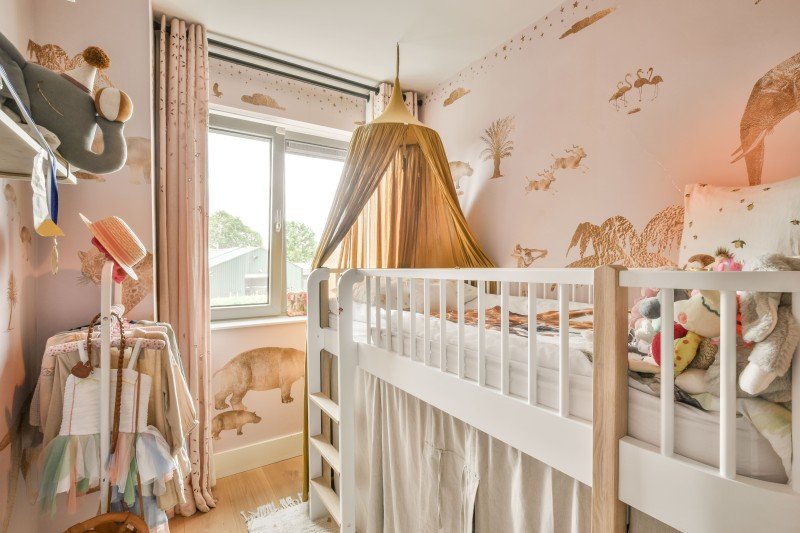A Comprehensive Guide to Children's Bunk Beds: Styles, Benefits, and Safety Considerations
Bunk beds have actually ended up being a popular choice for households wanting to maximize space and offer an enjoyable sleeping environment for kids. With their distinct design, they use a creative and practical option for shared bed rooms, playrooms, or perhaps guest lodging. This short article checks out the various designs of children's bunk beds, their advantages, safety factors to consider, and responds to some often asked concerns.
The Allure of Bunk Beds
Kid's bunk beds are more than just space-saving structures; they are likewise an entrance to daring dreams and imaginative play. Below is a detailed evaluation of their various advantages.
Advantages of Bunk Beds
- Space-Saving: Bunk beds efficiently make use of vertical space, making them an ideal option for smaller sized spaces.
- Lively Design: Many bunk bed designs include slides, tents, and themed elements, triggering imagination and excitement.
- Partner Sharing: Bunk beds are ideal for siblings sharing a space or accommodating slumber parties.
- Flexible Use: Some models can be separated into two individual beds, providing flexibility as kids grow.
- Storage Options: Many bunk beds include built-in drawer storage or racks, further boosting their usefulness.
Styles of Children's Bunk Beds
The range of bunk beds available today deals with various choices and requirements. Below is an overview of some popular styles.
| Style | Description | Best For |
|---|---|---|
| Requirement Bunk Bed | A standard design including one bed stacked above another. | Brother or sisters sharing a room. |
| Loft Bed | Comparable to a bunk bed without the bottom bunk, enables a workspace or play location below. | Minimal space for play/desk. |
| L-Shaped Bunk Bed | Two beds organized in an L-shape, frequently with additional areas for storage or play. | Distinct space designs. |
| Twin Over Full | A twin bed over a complete bed, accommodating different sleep needs. | Growing kids and teens. |
| High Sleeper | Stands even higher than a loft bed, typically including a desk or play location listed below. | Older kids requiring more play/desk space. |
| Camping Tent Bunk Bed | Bunk beds with a canopy or tent-like structure, producing a comfortable, enjoyable space. | Active and creative kids. |
Key Features to Consider
When choosing the right bunk bed for children, the following features are worth considering:
- Material: Bunk beds can be made from wood, metal, or a combination. Each has its special aesthetic and toughness.
- Weight Capacity: Always validate the weight limit of the bunk bed to ensure it can accommodate your kids securely.
- Security Rails: Ensure the top bunk has tough rails to avoid falls.
- Ladder Security: A properly designed ladder needs to provide simple and safe access to the upper bunk.
- Ending up: Ensure any finishes are non-toxic and safe for children.
Security Considerations
Security is vital when it concerns kids's bunk beds. The following guidelines need to be complied with:
- Age Appropriateness: Generally, children under 6 years of ages ought to not oversleep the upper bunk due to security threats.
- Tough Construction: Ensure the frame and products are solid and can support the weight without sagging.
- Regular Maintenance: Periodically examine for loose screws, bolts, or other parts that might need tightening.
- Clear Play Area: Keep the location around the bunk bed without toys and barriers to reduce tripping threats.
Setting Rules for Safe Use
Developing guidelines for bunk bed use will help guarantee security:
- Limit Jumping and Climbing: Children ought to be recommended versus leaping from the top bunk and getting on the sides.
- Monitoring Sleepovers: Monitor young visitors while they are using the bunk bed for the very first time.
- Inform on Ladder Use: Teach how to utilize the ladder safely, highlighting the value of dealing with the ladder when climbing up or down.
Frequently Asked Questions
1. What Childrens Bunk Beds UK lauriejeansonne.top is proper for a child to oversleep the leading bunk?
Most manufacturers recommend that kids ought to be at least 6 years old to sleep in the upper bunk. This standard is designed to reduce the risk of falls.
2. Can bunk beds be personalized?
Yes, many producers offer customizable alternatives, consisting of colors, materials, and extra features like drawers or desks.
3. Are bunk beds safe for weight?
Bunk beds have weight limits, generally varying from 200 to 400 pounds, depending upon the model and material. Always check the maker's requirements.
4. How do I keep and clean up a bunk bed?
Routinely examine for loose parts, keep the bed clean by wiping down surfaces, and guarantee the bed linen is fresh to promote a safe and sanitary sleep environment.
5. Can bunk beds be separated into specific beds?
Lots of bunk beds come with an option to separate them into 2 private beds, providing long-term versatility.
Kid's bunk beds are more than mere furniture; they are a practical, versatile, and imaginative element of a kid's room. With different styles readily available and numerous security factors to consider to remember, parents can pick the perfect bed that fits their space, meets their kids's requirements, and imparts a sense of experience. By comprehending the advantages, styles, and safety steps associated with bunk beds, households can create a wonderful and safe and secure sleeping environment for their children. Whether for brother or sisters sharing a space or space-saving options, bunk beds stay a cherished choice for lots of homes.

